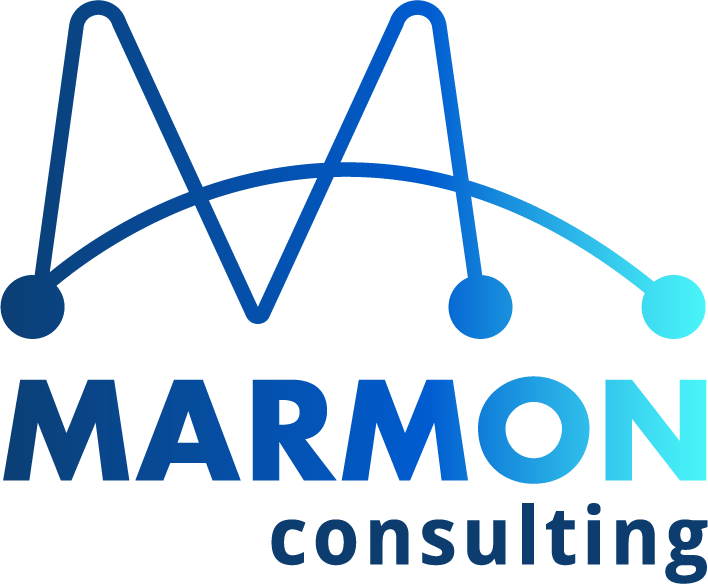Blog


Pam Marmon
3 Important Messages to Listen for as Your Organization Implements Change
The following is adapted from Speak Up or Stay Stuck.
“No one asked me first,” said my client John when we spoke about the organizational change in front of him. “Don’t people realize I have all these things on my plate, my voice hasn’t been heard, and now I have to change?”
I asked John what would help him understand the organizational change better, and his answer was clear. “I need to understand how it ties to the organizational strategy. If I understand the why behind the change, I can get behind it and support it.” What a simple yet profound insight!
Often, changes come our way without a clear explanation, and we are left connecting the puzzle pieces without knowing the complete picture. Listening is the first step to understanding workplace change initiatives because it’s necessary before formulating and offering valuable perspectives.
Another term for listening is gaining understanding. When we understand what our leaders intended when they made a decision, we are more likely to properly engage and see it through. Still, being on the receiving end of communications requires active listening. As your organization implements change, here are three important messages to listen for.
1. Why Is This Change Taking Place?
The most important piece of information you need to understand is the why driving the organizational change. One can hope your senior leaders articulated it and cast a compelling vision, but if they didn’t, you need to probe for the answer.
Ask your immediate supervisor, and if he or she doesn’t know, politely request to push up the chain of command until you find clarity. Here is an example of language you can use to show your interest, curiosity, and support.
“I am aware of the upcoming change in our organization. Although I feel _________ [insert your choice of expression], I am curious to find out what is driving this decision so I can communicate it to others within my sphere of influence and be helpful. Would you be able to find that out for me?”
2. How Will This Change Impact Me and My Team?
The second most important message to listen for during organizational change is how the change will impact you and your team.
Early on when the announcements are made, your senior leaders likely won’t know precisely how to respond to this question. Be patient because clarity will come. Every organizational change requires risk, and you can be sure your senior leaders are not guaranteed a return on the investment. Some aspects of the change are unknown, and the impact could be uncertain for them as well.
My advice to senior leaders is consistent: tell people as much as possible based on what you know. Some aspects of the change will require confidentiality for a period of time. Don’t be discouraged by that; timing will reveal the critical information you need to know.
If your leaders shy away from sharing relevant information, frame the question in a way that they will hear it and appreciate it. For example:
“Since we are starting to prepare our teams for the upcoming organizational change, can you help me understand the most useful skills we can acquire within my team to support this effort? I want to be proactive in how I engage with my team members as they help implement this change in our organization.”
3. What Is Expected of Me to Make This Change Successful?
The third most important message to listen for during organizational change is what is expected of you and your team so that the change can be successful. You will hear different responses to this question depending on the phase of the change. Initially, you likely will be told to stay informed and do your best to read, respond, and engage with the team leading the change. You may even be asked for input on how to make the change successful!
Take every opportunity to show your willingness to learn. As the change becomes clearer, you may be invited to attend training or demo sessions to gain the required skills or to participate in company-wide events where you can learn more information.
Proactively demonstrate your team’s efforts to get the best possible outcomes. Ask about the key metrics that your senior leaders want to achieve. If you understand what metrics they find important, you can demonstrate your team’s contribution to achieve that success measure.
If your leaders shy away from sharing key metrics, frame the question in a way that they will hear it and appreciate it. For example: “Our team wants to be aligned with the expectations our leaders have regarding this workplace change. What key metrics are important to monitor so that we can adjust our resources and dedicate time to support this effort?”
Once the change is rolled out officially in your organization, you will be held accountable to deliver results that are directly tied to the change. So voice your questions and listen to the responses before the change initiative is in full swing.
Lean on Listening
John had a choice: he could shut down and quit in the face of enormous organizational change, or he could pause to face it and do his best to understand why his leaders had decided to impose a new way of working.
When change in the workplace is not properly rolled out, we can get lost in the information but miss the communication. Perhaps even more tragically, we miss the human connection that is critical in teams that weather organizational storms.
Thankfully, John had a powerful tool at his disposal: listening. Becoming a skilled listener will help you find your voice during organizational change. Active listening can position you to understand the reason for the workplace change and how you and your team can prepare to achieve the desired results.
Adopt a posture of curiosity and inquisitiveness, assuming the best intentions of your senior leaders, and as the impact of the workplace change becomes clearer with each phase, practice patience and build trust.
For more advice on workplace change, you can find Speak Up or Stay Stuck on Amazon.
Pam Marmon is the CEO of Marmon Consulting, a change management consulting firm that provides strategy and execution services to help companies transform. From executives at Fortune 100s to influencers at all levels, Pam helps leaders achieve lasting organizational change with minimal disruption. She is also the bestselling author of No One’s Listening and It’s Your Fault, a book that equips leaders to get their message heard during organizational transformations, and the creator of the LESS change management framework. Pam and her family live in Franklin, Tennessee, and chase adventures wherever the road takes them.
